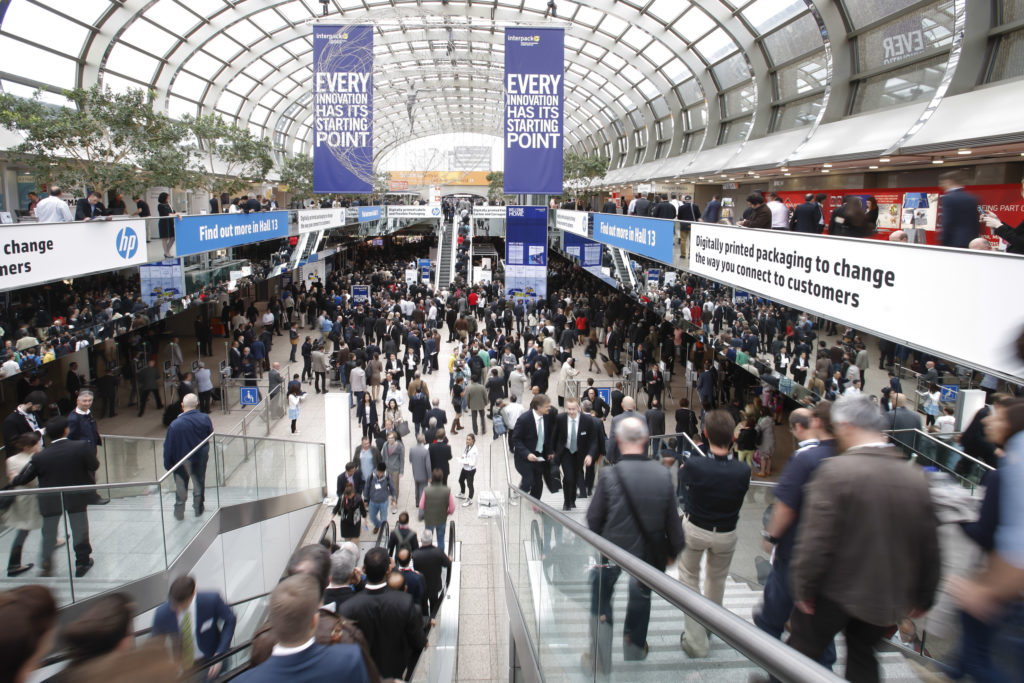
THE stage is set for the ‘Olympics’ of the processing and packaging industry.
Some 2,700 exhibitors from 60 countries and over 170,000 visitors will descend upon Düsseldorf for interpack 2017. The week-long event begins on May 4 at the city’s Messe Düsseldorf trade fair ground and stretches across 19 halls.
There will be around 70 UK exhibitors at the event, which takes place every three years and features the latest innovations in the industry. Thomas Dohse, deputy director for interpack, described it as the “largest and most important show” for the packaging and processing sector.
“The Olympics are every four years and interpack is every three years, so it is kind of the Olympics for the processing and packaging industry,” he said. “You have to see it with your own eyes to understand the difference between interpack and the other shows around. Some of our competitors are mainly dedicated to one topic; either it’s beverage, or food, or pharmaceuticals – but intepack is really a show for all of those.”
The exhibition is targeted at the food, beverages, confectionary, bakery, pharmaceutical, industrial, cosmetics and non-food industries.
Thomas continued, “These main eight industries are our basic target groups from the visitor side and all of those are coming to see the latest innovations in their field.”
Thomas said the show is “in a very good position” with the fair ground’s capacity of over 260,000 sq. m overbooked by around 20%.
“(The exhibitors) are all looking forward to presenting their innovations here; we have all the major exhibitors from each of those industries on board.”
Leading exhibitors include Krones, KHS, Bosch, IMA, Coesia, Marchesini and Schubert.
interpack 2017 will include a special topic called Industry 4.0, delivered in partnership with the Mechanical Engineering Industry Association (VDMA). The show will be held at a ‘technology lounge’ at the VDMA stand and will focus on the digitisation of the processing and packaging industry. It is set to cover topics such as how machines will communicate with each other in the future and how a smart factory could work.
“It will also feature examples of solutions for the industry relating to security, traceability, counterfeit protection and customised packaging.
interpack’s SAVE FOOD initiative will also take place at the event with a special show called innovationparc, which will centre on reducing food waste.
“One third of food gets lost or wasted around the world every year and this initiative is meant to stop this, or to find solutions to fight food waste and food loss,” Thomas explained.
“If you look in your fridge, for example, and if you have bought too much in the supermarket, you just have the ‘best before’ date reach and then you throw it away, so it’s a problem for everyone and the packaging is sometimes considered a problem in terms of waste – but here, in terms of food waste, it is part of the solution.Without the proper packaging you always have the problem of rotten food or of not well-packed food…so this is kind of an interesting special show.”
The SAVE FOOD initiative is delivered in partnership with the Food and Agricultural Organisation of the United Nations (FAO) and the United Nations Environment Programme (UNEP).
Running in tandem with interpack will be components 2017, a trade fair for suppliers, which will take place in a 5,000 sq. m temporary hall located on site. Exhibitors will be offering a range of products in drive, control and censor technology, industrial image processing and material handling technology along with other machine components.
Thomas said that while exhibitors are waiting for the show to unveil their latest innovations to the public, many innovations focused around resource efficiency and energy can be expected.
He said, “This is important, not only for the material companies, but also when it comes to packaging machinery. If the machinery is using less power or less energy or less material for the product it really saves money for the company, so they are in very harsh or strong competition and it could be a solution to have flexible and efficient machinery, so that’s what we’re expecting to see.”
As interpack is set to deliver its largest show in the event’s 50-plus year history, Thomas spoke on why he believes the exhibition continues to expand; “I think when you see the development in the global rise of the world population, and they all have to eat, they all have to get access to pharmaceuticals, and let’s say the food industry and the pharmaceutical industry are core industries for interpack and they need to generate or fulfil this worldwide demand, and so they have to look for new innovations here.”
Thomas added, “We have seen the figure that from 2015 to 2020 in the food industry the amount of packaged food will rise by 50% so there is a huge demand, also coming from Asia or from India or also from Africa, and so this is the main driver behind this – the urbanisation in the world, the growing middle classes in some of those countries, demographic changes (and) in Europe as well – so those developments lead to this demand.”













